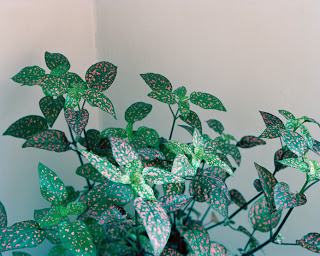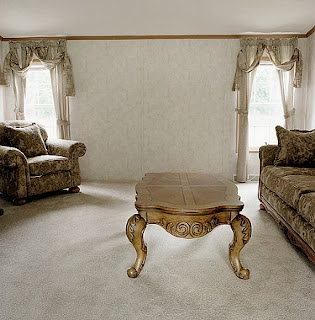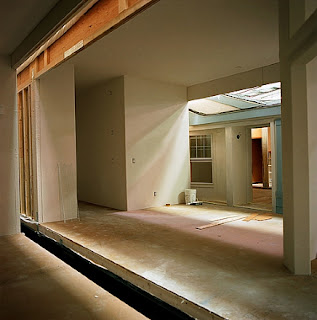Ryan Boatright’s work seems to be focused primarily on displaying the urban environment in a minimalistic style. What I enjoy most about these images is Ryan’s ability to really limit the information which we are given. I almost have to question whether or not the shots are of models or of actual sites and places. I like the idea that I don’t know for sure one way or the other. I try to have an ambiguity in my images and one thing I have been struggling with is how much or how little to show. As I attempt to limit my series down to a very particular selection of images, I am starting to think more and more about composition and what will continue to be important as I work on turning the series into a book. My favorite from Ryan's work is probably the series Exurbia, in which Ryan features houses from middle class suburban locations. “Ryan refers to these structures as being “fortress-like,” and is interested in how the builders construct homes of similar design for “occupants who in turn conform to neighborhood codes and restrictions.”” [2]What engages me is the minimalistic approach which produces very clean, simple, images. But when you start thinking about the entire series, it seems to have a more depth. “These straightforward, sparse images of places and things exemplify his straight photographic style. However, as I explored his work further, the Exurbia project began to take its place in a broader investigation of family, memory and the medium of photography.”[1]
Biography:
Ryan Boatright is an American artist based in Paris, France. Although varied, his projects are often crafted from a blend of technical and conceptual processes that evaluate common familial experiences, the environments that shape them, and the pictures that document them. The attraction to family photographs continues to lead him to examine the role of photography in the mainstream and to evaluate the medium’s ability to measure experience. The products of his work are exhibited as traditional photographs, digital prints, videos, and unique art objects.
Ryan received a degree in photography from Indiana University in 2005, and joined the staff of the Image Permanence Institute (IPI) at RIT from 2005-2009, where he performed research on visual methods to identify and characterize historic photographic materials and contemporary digital prints. At IPI he developed the Graphics Atlas, an online resource that brings sophisticated print identification and characteristic exploration tools to archivists, curators, historians, collectors, conservators, educators, and the general public.
Boatright, Ryan . "Ryan Boatright: About." RYAN BOATRIGHT: Contemporary Artist | Photographer. N.p., n.d. Web. 11 Apr. 2011.
.
Links:
Artist’s Website: http://www.ryanboatright.com/
http://www.heyhotshot.com/blog/2010/03/31/hhs-contender-ryan-boatright/
http://www.shanelavalette.com/journal/2007/07/16/ryan-boatright-exurbia/
Works Cited:
"Hey, Hot Shot! - HHS! Contender: Ryan Boatright." Hey, Hot Shot! : A Jen Bekman Project. N.p., n.d. Web. 11 Apr. 2011. .
Lavalette, Shane. "SHANE LAVALETTE / JOURNAL » Ryan Boatright: Exurbia." SHANE LAVALETTE. N.p., n.d. Web. 11 Apr. 2011. .
Images:
All Images © Ryan Boatright




















































